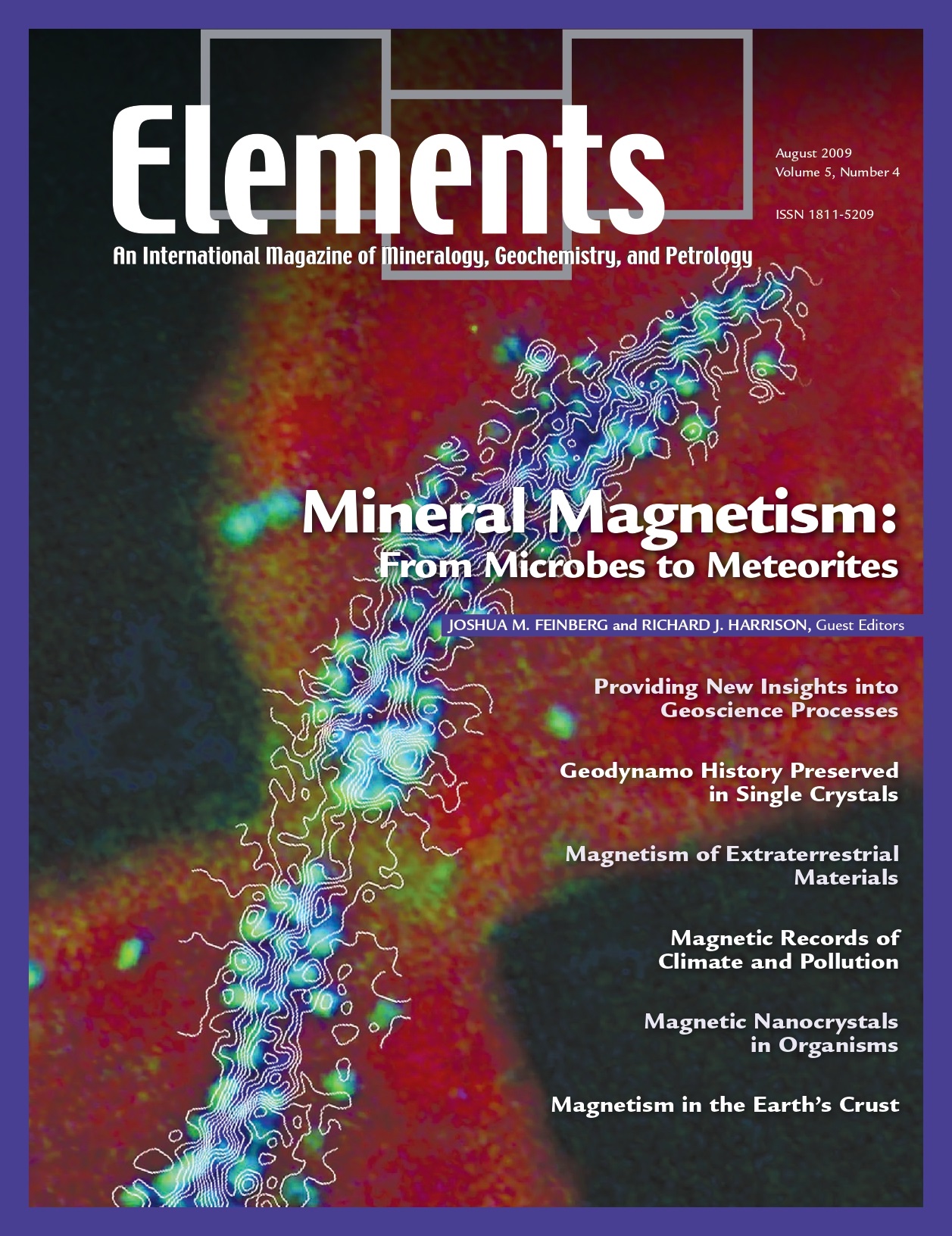
Bentonites – Versatile Clays, April 2009, Vol. 5, No. 2
June 28, 2024
Cosmochemistry, February 2011, Vol. 7, No. 1
June 28, 2024Mineral Magnetism: From Microbes To Meteorites, August 2009, Vol. 5, No. 4
$20.00
Magnetic minerals are ubiquitous in the natural environment. They are also present in a wide range of biological organisms, from bacteria to human beings.
Mineral Magnetism: From Microbes To Meteorites
August 2009, Vol. 5, No. 4
Magnetic minerals are ubiquitous in the natural environment. They are also present in a wide range of biological organisms, from bacteria to human beings. These minerals carry a wealth of information encoded in their magnetic properties. Mineral magnetism decodes this information and applies it to an ever increasing range of geoscience problems, from the origin of magnetic anomalies on Mars to quantifying variations in Earth’s paleoclimate. The last ten years have seen a striking improvement in our ability to detect and image, with higher and higher resolution, the magnetization of minerals in geological and biological samples. This issue is devoted to some of the most exciting recent developments in mineral magnetism and their applications to Earth and environmental sciences, astrophysics, and biology.
Why You’ll Love Elements Magazine:
- Expert Contributors: Articles written by renowned researchers in the field of geoscience.
- Engaging Content: Join a community of readers who are passionate about Elements.
- Exceptional Quality: Each issue is printed on high-quality paper with stunning visuals and detailed illustrations that bring complex scientific concepts to life.
Order your copy of the August 2009 issue of Elements magazine today and delve into mineral magnetism from microbes to meteorites.
Related products
-
The Nuclear Fuel Cycle – Environmental Aspects, December 2006, Vol. 2, No. 6
$20.00Increasing concerns for the effects of global warming that result from rising greenhouse gas concentrations in the atmosphere have led to a reexamination, even enthusiasm, for nuclear power. Of all the current alternatives to fossil fuels, nuclear fission is the most important source of energy, accounting for 17 percent of the world’s electricity.
-
Energy: A Geoscience Perspective, June 2007, Vol. 3, No. 3
$20.00The issue of energy resources in the future may be one of the most important in the 21st century. Future climate change and the ways to abate it while still supplying needed energy will impact future political relations, world economics, human health, and the environment.
-
Early Earth, August 2006, Vol. 2, No. 4
$20.00The earliest Earth was a strange inhospitable world, yet transitions occurred culminating in the evolution of life within the first billion years. The preservation of a sparse and ambiguous rock record has encouraged debate.




